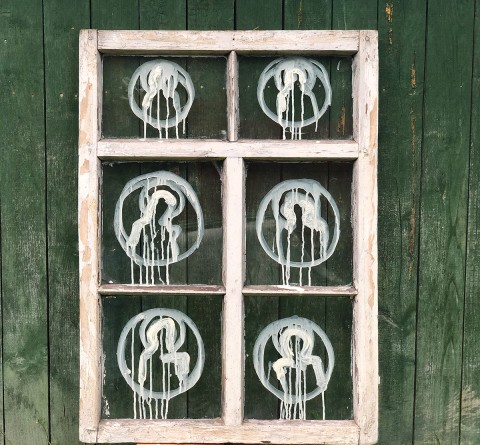Gate, by Maxim Demin

Many artists work with different paints or printmaking materials, but the background Maxim Demin brings to art making—he also does icon restoration—expands his level of experimentation to forms, formats, and the rich historical study of art through the centuries. In this acrylic painting on a found object (glass panels), the artist makes reference to an art form often seen as multi-planed, visually complex, and theologically rich. He strips those planes down to street-level work: a discarded windowpane you might find alongside a trash bin. It’s the simple and most basic forms—squares, circles, head, shoulders—that converge the sacred with the familiar.
In the art world, there is often a kind of academic, theological preciousness around the language of faith and spirituality. The constrained hold of a certain message to be shared in a theological frame—that can be as richly deep as it is structurally restrained. Then sometimes there are artists who work both within these structures and outside of them, like Demin, where the “outside” elements translate form-theology-pattern-meaning into a visual language that feels at once surprising and immediate and accessible.
As Demin writes about this work, “I believe that such simplicity and sometimes ‘absurdity’ of using the material, as well as simplicity and minimalism in the image, opens a direct path for the viewer to perceive spiritual values.”





